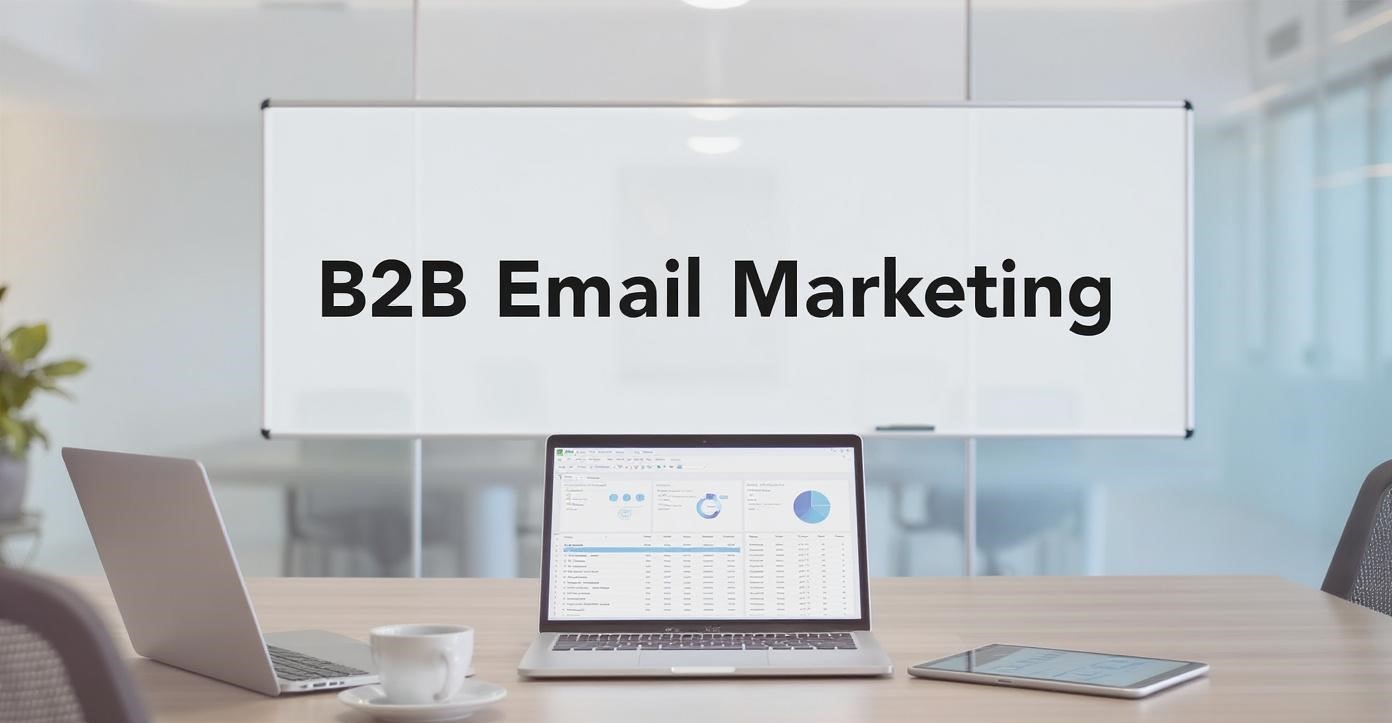In B2B Email Marketing, mobile optimization is becoming a critical trend for 2025. With more professionals checking emails on smartphones and tablets, ensuring that email campaigns display correctly across all devices is essential. Mobile-optimized emails improve readability, engagement, and conversions, providing a seamless experience for busy decision-makers on the go.
Why Mobile Optimization Matters
A significant portion of B2B email opens now occurs on mobile devices. Emails that are not mobile-friendly can appear distorted, with broken formatting or unreadable text, leading to lower engagement and higher unsubscribe rates. Optimizing for mobile ensures that emails are visually appealing, easy to read, and actionable, regardless of screen size.
Benefits of Mobile-Optimized Emails
Implementing mobile optimization in B2B email campaigns offers several advantages:
-
Improved Engagement: Mobile-friendly emails are more likely to be read and clicked.
-
Higher Conversion Rates: Easy-to-navigate emails encourage recipients to take action.
-
Enhanced User Experience: Responsive design ensures smooth interaction across devices.
-
Lower Bounce Rates: Properly formatted emails reduce frustration and unsubscribes.
How to Optimize Emails for Mobile
To create mobile-optimized B2B emails, follow these steps:
-
Use Responsive Design: Ensure email templates adjust automatically to different screen sizes.
-
Simplify Content: Keep text concise and focus on clear messaging.
-
Optimize Images: Use small file sizes and proper scaling to prevent slow loading.
-
Prioritize CTAs: Place call-to-action buttons prominently and make them easy to tap.
-
Test Across Devices: Preview emails on multiple devices and email clients to ensure consistent performance.
Challenges and Considerations
While mobile optimization is essential, marketers should be aware of potential challenges:
-
Email Client Variability: Different email clients may render emails differently, requiring thorough testing.
-
Balancing Design and Content: Ensuring visual appeal while maintaining concise messaging is critical.
-
Load Speed: Large images or complex designs can slow down email loading on mobile networks.
Final Thoughts
Enhanced mobile optimization is transforming B2B email marketing by ensuring that campaigns are accessible and engaging on all devices. By prioritizing mobile-friendly design, marketers can improve engagement, boost conversions, and provide a seamless experience for prospects in 2025.
The Shift Toward Hyper-Personalization
B2B buyers today expect the same level of personalization they experience in B2C marketing. They no longer respond to generic emails or broad campaigns. Instead, they value messages that speak directly to their challenges, goals, and interests. Hyper-personalization achieves this by combining behavioral analytics, CRM data, and intent signals to deliver highly relevant content that resonates with each individual recipient.
Why Hyper-Personalization Matters in 2025
As inbox competition intensifies, only the most relevant emails will stand out. According to industry insights, personalized subject lines can increase open rates by over 25%, while tailored content can boost conversions significantly. Hyper-personalization doesn’t just enhance engagement—it builds stronger trust and long-term relationships with B2B decision-makers.
Core Elements of Hyper-Personalized Email Marketing
To effectively implement hyper-personalization, marketers must integrate the following elements:
-
Data Collection and Integration: Collect behavioral data from multiple sources, including website visits, content downloads, webinar attendance, and CRM activity. Integrate this data into your marketing automation system for a unified view of each prospect.
-
Behavioral Triggers: Set automated triggers that send emails based on recipient actions—like visiting a pricing page or downloading a whitepaper. This ensures timely and relevant communication.
-
Dynamic Content Blocks: Use dynamic email templates that adapt based on recipient behavior, job role, or stage in the buyer journey. For example, a CEO might receive strategic insights, while a marketing manager receives practical implementation guides.
-
AI-Driven Recommendations: Utilize AI to suggest content or offers tailored to each recipient’s past interactions and predicted interests.
-
Real-Time Personalization: Adjust email content in real-time based on when and where the recipient opens it. This keeps your message contextually relevant and engaging.
Benefits of Hyper-Personalization
Implementing hyper-personalization in B2B email campaigns delivers several measurable advantages:
-
Higher Engagement Rates: Recipients are more likely to open and engage with content tailored to their needs.
-
Improved Lead Quality: Personalized nurturing helps identify and convert high-intent leads more efficiently.
-
Enhanced Buyer Experience: Emails that reflect a deep understanding of the buyer journey create stronger emotional connections.
-
Better ROI: Focused, data-driven campaigns reduce waste and maximize results.
How to Build a Hyper-Personalized Strategy
Creating a successful hyper-personalized B2B email campaign involves several key steps:
-
Start with Quality Data: The foundation of personalization lies in accurate and clean data. Regularly update CRM and email lists to remove outdated or irrelevant contacts.
-
Define Clear Segments: While hyper-personalization focuses on individuals, starting with micro-segments (e.g., industry, company size, pain points) helps create structured workflows.
-
Leverage Predictive Analytics: Use predictive models to identify potential prospects and anticipate their needs. AI tools can forecast which content is most likely to convert each recipient.
-
Craft Relevant Content: Personalization should extend beyond first names—focus on aligning your messaging with the recipient’s business goals, challenges, and current market context.
-
Test, Measure, and Optimize: Continuously monitor performance metrics such as open rates, click-through rates, and conversion ratios. Use A/B testing to refine subject lines, tone, and CTAs.
Challenges in Implementing Hyper-Personalization
While powerful, hyper-personalization requires thoughtful execution. Some key challenges include:
-
Data Privacy and Compliance: With stricter regulations like GDPR and CCPA, marketers must ensure data is collected and processed ethically.
-
Integration Complexity: Combining data from multiple platforms can be technically demanding.
-
Resource Intensity: Creating personalized content at scale requires automation tools and advanced analytics capabilities.
-
Avoiding Over-Personalization: Excessive targeting can feel intrusive if not done with subtlety and care.
Future Outlook
The future of B2B email marketing lies in merging automation with personalization. As AI and machine learning evolve, emails will become smarter—anticipating prospect needs and delivering messages in real time. Hyper-personalization will no longer be a luxury but a necessity for businesses looking to stand out in crowded inboxes.
By 2025, B2B marketers who master hyper-personalization will see stronger engagement, improved lead conversion, and lasting customer relationships built on trust and relevance.
Read Full Article : https://acceligize.com/featured-blogs/b2b-email-marketing-trends-to-watch-in-2025/
About Us : Acceligize is a global B2B demand generation and technology marketing company helping brands connect with qualified audiences through data-driven strategies. Founded in 2016, it delivers end-to-end lead generation, content syndication, and account-based marketing solutions powered by technology, creativity, and compliance.


